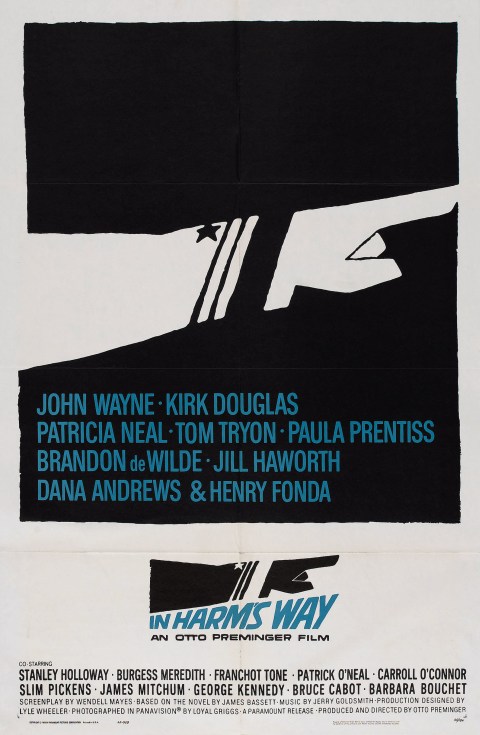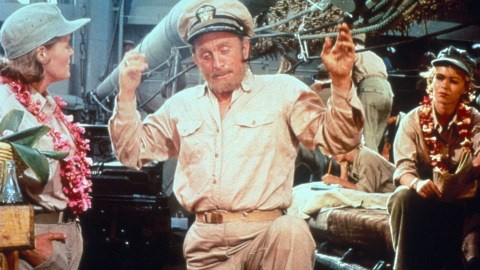17. 4. – 19. 4. 2026
In Harm's Way

 Original title: In Harm's Way
Original title: In Harm's WayDirector: Otto Preminger
Production: 1965, USA
Length: 165 min.
Annotation for KRRR! 2019
The Japanese attack on the American military base Pearl Harbor shakes Captain Torey's career. However, he is entrusted with an important operation that can deal a heavy blow to the Japanese army... Such a subject could perhaps promise a lot of exciting war action, but Otto Preminger's film After Evil from 1965 is much more devoted to the development of its characters and their relationship to the army, to those close to them and to the surrounding world in general.
Although two of the central roles are played by the iconic representatives of American men John Wayne and Kirk Douglas, their characters in the film After the Bad are not really heroes in the classical sense of the word. It is mainly through them that we get to know the reverse face of spectacular battles, in several senses. The characters of the film After the Bad not only act relatively unheroically from time to time and not all commanders act competently, but most of the battles also take place outside the frame, so instead of those spectacular battles, we mainly observe their consequences with our own eyes.
Even so, it is advisable to see the film in 70mm format, because even in more intimate scenes, it can work comprehensively with the depth of space, when it involves the action in all action plans. Although the dialogues often take place in the foreground, the events in the background of the shots are almost equally important in the overall framing. The composition and staging are actually in harmony with the approach to the action and with the emphasis on the internal conflicts of the protagonists. In large units, many important things happen at the same time, however, the front plans are mainly focused on individual characters, while we have to look for other connections in the back plans.
At the same time, the image logically fits into the wider context of Preminger's work from the late 1950s and 1960s, when he devoted a lot of time to the problems of American society. He examined the functioning of the American justice system in the film Anatomy of a Murder (1959), in the film Advise and Consent (1962) he offered a ruthless picture of the political backstage, and in The Cardinal (1963) for a change he discussed the conflict of human needs and the non‑negotiable rules of the Catholic Church.
In these contexts, it is less surprising that the film After the Bad rather analyses the effects of the war on its individual participants, rather than conveying the spectacular battles and celebrated victories that it leaves in the background. Continuity with some of Preminger's previous works is not only thematic, because this time he also collaborated with screenwriter Wendell Mayes, who was already behind the screenplays for the above‑mentioned films Anatomy of a Murder and Advise and Consent.